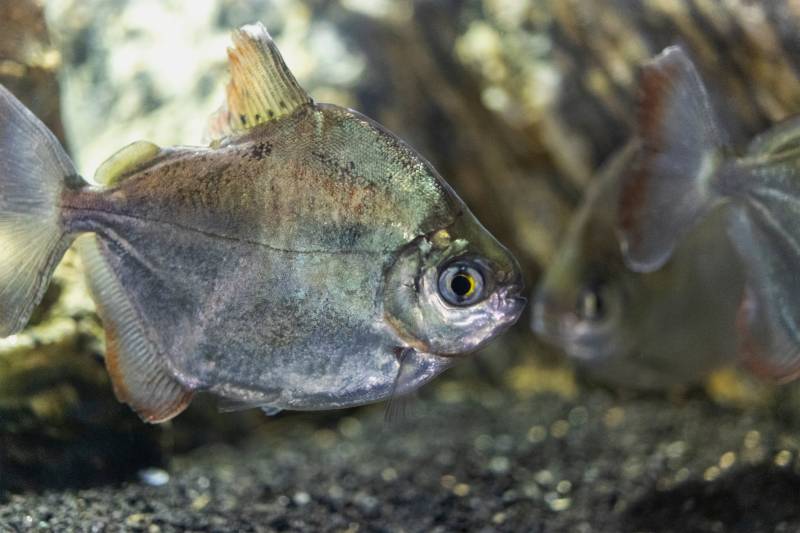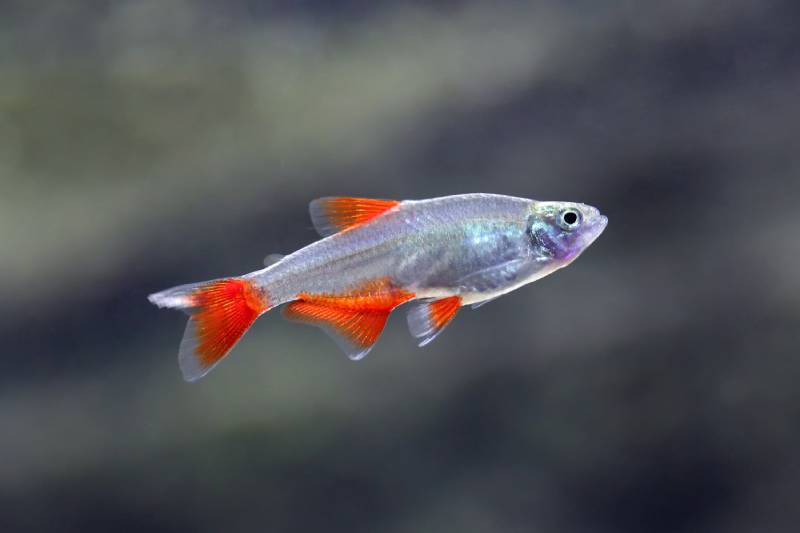How To Make Aquarium Plants Grow Faster: 9 Useful Vet-Verified Tips

Updated on
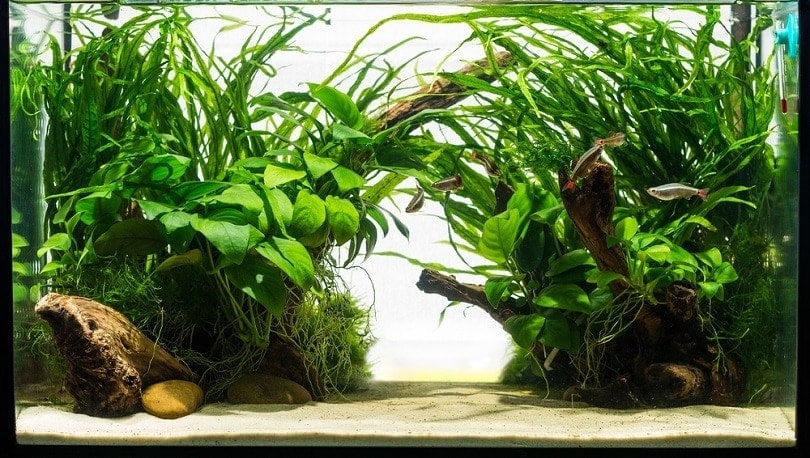
Many people feel that aquariums are just not complete without plant life. Aquatic plants and freshwater fish benefit from each other’s presence – a phenomenon that is known as a symbiotic relationship. For most people new to the hobby of fishkeeping, the world of aquatic plants seems to open up even more possibilities when it comes to stocking and aquascaping an aquarium.
That being said, getting aquariums plants to grow can be difficult sometimes. There are quite a few factors that you need to take into account. When it comes to how to make aquarium plants grow optimally, let’s go over some tips and tricks that you can follow to make them grow as fast as possible.
The 9 Tips on How to Make Aquarium Plants Grow Faster
Please keep in mind that you technically cannot make an aquarium plant grow faster than their normal growth rate. However, if they are lacking an essential nutrient, or are kept in less than ideal conditions, then their growth will definitely not be ideal and such plants may benefit from appropriate intervention.
Trying to “force” a plant that’s already thriving to grow faster is not advised, as this will either result in an overgrowth of algae or even a loss of quality for your plant, which, in turn, may lead to the loss of the plant.
1. A Good Substrate
One thing to look out for is your substrate. Your plants, if you have substrate-based plants, are going to need a firm medium to grow in. Something like fine aquarium gravel or some kind of soil-like substrate is a good idea here. This will let your aquarium’s plants develop a large and healthy root system.
The bigger and healthier the root system of your aquarium’s plants is, the more nutrients they can absorb from the substrate, thus allowing them to grow bigger and faster than you thought possible. A good substrate is not only important for the growth of a healthy root system, but for nutrients as well. If you want your plants to have a lot of nutrients, good substrate is definitely a bonus.
2. Fertilizers
Another thing that you need to look out for is fertilizer. If you have a substrate-based plant, having a fertilizer and nutrient-rich substrate will make your aquarium plants grow faster. Even when the substrate gets a little old, you can always add some fertilizer and nutrients into the water to help speed up healthy growth.
If you have plants that do not really develop a large root system, especially if you have floating plants that don’t even touch the substrate, you may want to add some liquid fertilizer and nutrients into the water. Remember though, make sure to add the appropriate amounts because too much of this stuff may harm your plants.
Though plants need nutrients like potassium, carbon, and nitrogen, overdosing on these can do more harm than good. Overdosing a single nutrient is not advised unless you are specifically told to do so by an aquatic veterinarian or a fisheries biologist.
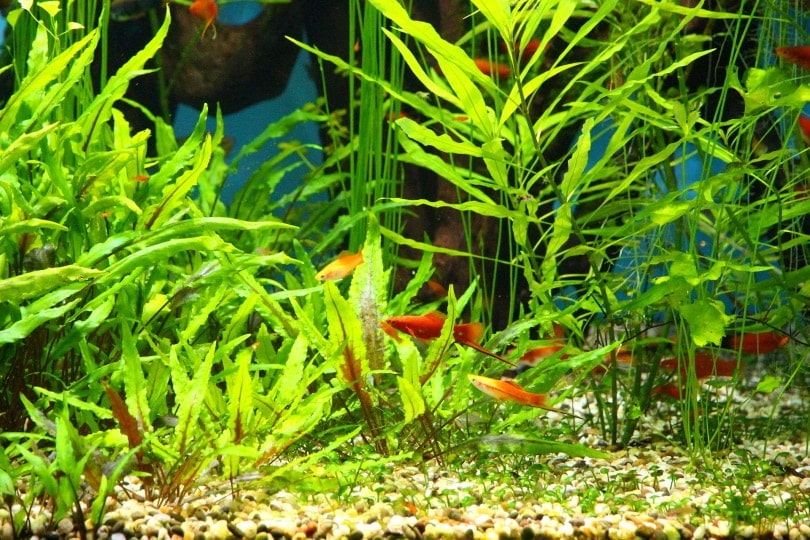
3. Carbon Dioxide
For many fish keepers, the “right of passage” to where they consider themselves to be professionals with aquatic plants is when they decide to incorporate a carbon dioxide-infusing system into their aquarium. This is by far one of the most effective ways to ensure that your plants grow at their optimal rate.
However, it’s also difficult to get right, and dosing it properly is crucial – the presence of excess carbon dioxide will be detrimental to your fish. In addition, it will also require modifications to your water flow and filtration systems, as too much surface water agitation will render your efforts useless. This is because carbon dioxide escapes water whenever the surface is agitated (conversely, oxygen enters).
If you’re keen on a carbon dioxide system for your plants, it’s best to follow the lead of an experienced aquatic veterinarian or a biologist who’s dealt with aquatic plants.
4. Algae Control
Algae is an “enemy” to the other plants in your aquarium. Algae will eat up valuable nutrients, space, and light that your plants need to grow. Getting a UV sterilizer to kill off algae growth definitely helps with this. Another thing you can do is to get yourself some algae-eating fish and snails, as they will get rid of algae as it grows. However, it’s not reasonable to expect such fish to sustain themselves on just algae alone.
The key to dealing with an algae problem is understanding that algae is an indication that there’s a nutritional imbalance in your aquarium. Algae blooms most when the amount of light, nutrition, and other factors that influence plant growth are either excessive or insufficient. An algae problem will resolve once you identify and treat the underlying cause.
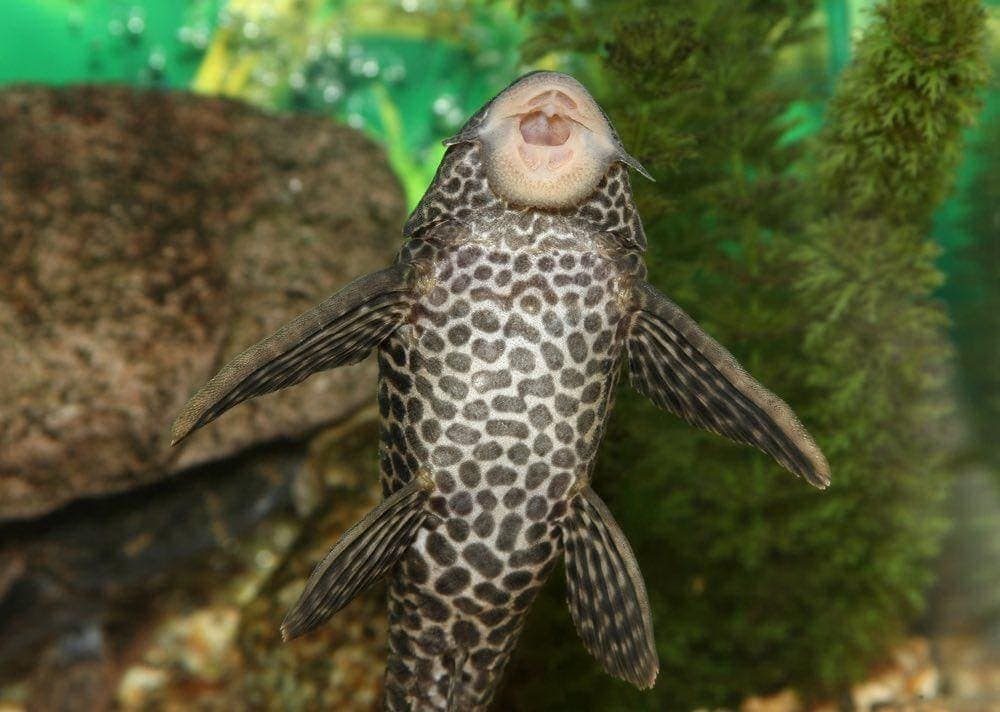
5. Temperature
Something that you might want to invest in if you want your aquarium plants to grow faster is a good water heater. Not all plants need really warm water, but most certainly do. Of course, you need to look up what temperature is best for the plant in question, but generally speaking, they like to be warm.
The acceptable water temperature range for most freshwater aquatic plants is between 23 – 27 °C (approximately 74 – 80 °F).
6. Lighting
Most—if not all—plants need light to grow, which means that you need to make sure that your plants are getting enough light. You may think that a stronger light that incorporates all spectrums of light and gives off some UV rays is the best way to go, which is usually the case, but not for all plants.
Some plants like less light, darker conditions, and will do fine with less UV rays. It really depends on the specific plants you have. However, generally speaking, a good full-spectrum LED light with some UV ray emission is going to help your aquarium plants grow at an optimum pace.
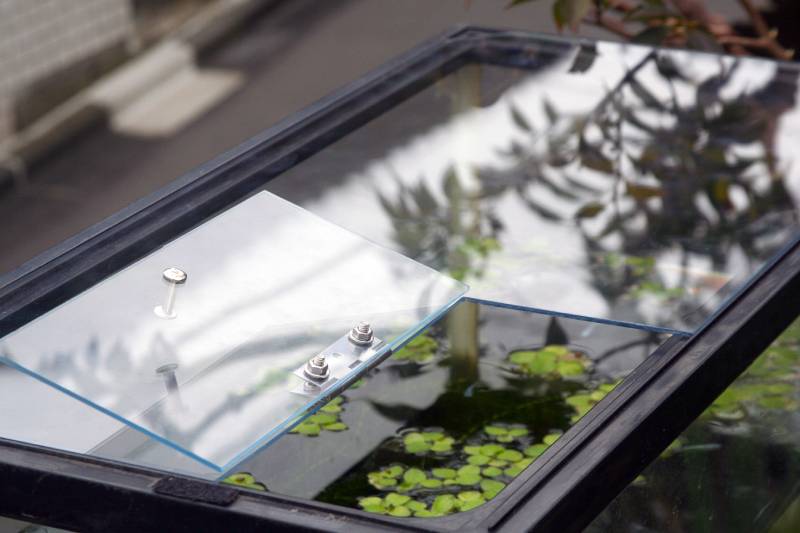
7. Filtration
Another thing that needs mentioning is that your plants require a good filtration unit to grow fast and healthy. Simply put, filters help remove toxins and impurities from the water, which are not only bad for fish, but for plants too. A good 3-stage aquarium filtration unit will definitely help your plants grow much faster than they otherwise would without a filter. However, keep in mind that chemical filtration can sometimes neutralize liquid fertilizers. It’s important to read the instructions on your purchased product to check to see if they list any guidelines for the use of chemical filtration with their product.
8. The Fish In Your Aquarium
It’s important to keep in mind that while all fish tend to appreciate plants, the reverse isn’t necessarily true. Many fish can uproot, eat, and destroy plants as they go about their usual daily tasks. Many aquarists don’t seem to mind this, however, if your intention is to keep your plants as healthy as possible, then it might be necessary to re-evaluate the inhabitants of your tank.
Larger cichlids and fish like giant gouramis will definitely make short work of most plants. Goldfish are grazers and will definitely enjoy uprooting and nibbling on any plants that aren’t secured properly to the substrate (or onto something like driftwood).

9. The Other Plants
Finally, just like how algae compete with your plants for resources, the same goes for your other plants as well. If you have fast growing plants, such as Hornworts (Ceratophyllum demersum), next to slow growing plants, such as the Java Fern (Microsorum pteropus), then they’ll make more of any fertilizer you add into the aquarium. Likewise, surface plants can sometimes overrun the top of your aquarium, restricting the amount of light that reaches your plants which are rooted in the substrate.
Conclusion
Growing aquarium plants is definitely a rewarding experience. At times, slow growing plants may benefit from a slight adjustment in the way you care for them. In this article, we’ve covered several pointers that might shed light on what may be hindering the optimal growth of your aquatic plants.
Featured Image Credit: dushkovladimir, Shutterstock



